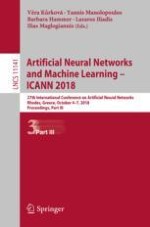2018 | OriginalPaper | Buchkapitel
Effectively Interpreting Electroencephalogram Classification Using the Shapley Sampling Value to Prune a Feature Tree
verfasst von : Kazuki Tachikawa, Yuji Kawai, Jihoon Park, Minoru Asada
Erschienen in: Artificial Neural Networks and Machine Learning – ICANN 2018
Aktivieren Sie unsere intelligente Suche, um passende Fachinhalte oder Patente zu finden.
Wählen Sie Textabschnitte aus um mit Künstlicher Intelligenz passenden Patente zu finden. powered by
Markieren Sie Textabschnitte, um KI-gestützt weitere passende Inhalte zu finden. powered by
